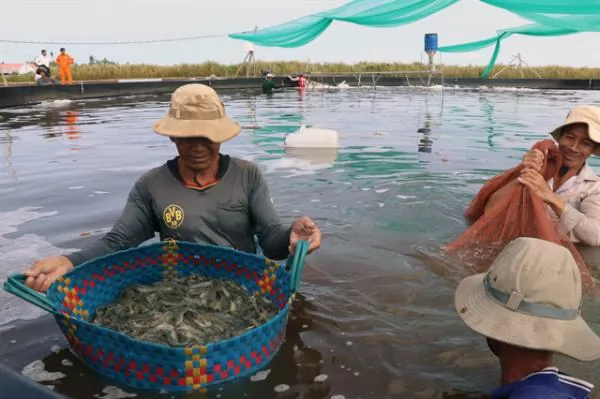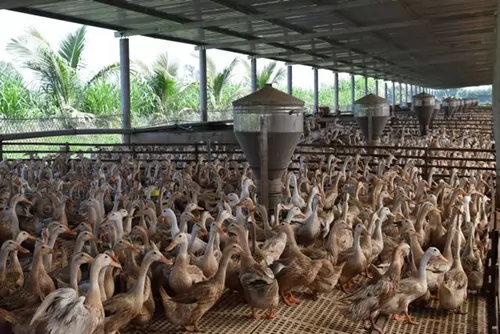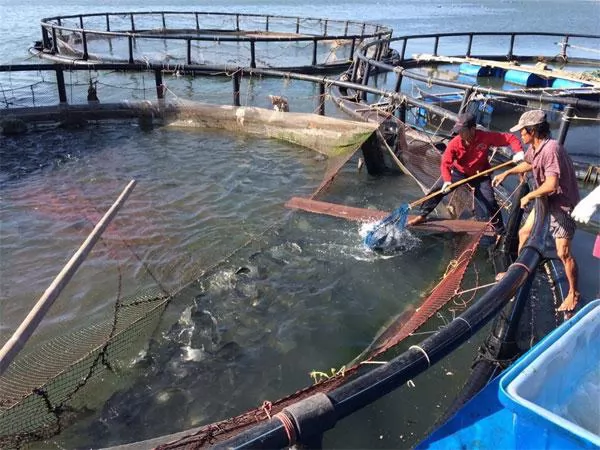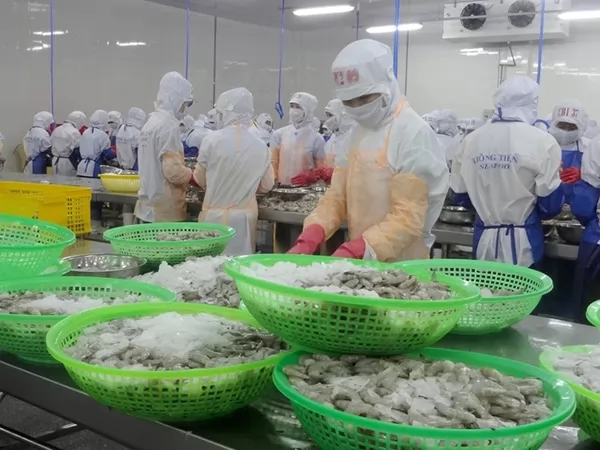Kiên Giang Province increases shrimp farming

White-legged shrimp is bred under a two-stage farming model in Kiên Giang Province's An Minh District. — VNA/VNS Photo Lê Huy Hải
Kiên Giang Province plans to produce more shrimp using advanced techniques to enhance yield and quality this year.
KIÊN GIANG — Kiên Giang Province plans to produce more shrimp using advanced techniques to enhance yield and quality this year.
The Cửu Long (Mekong) Delta province plans to produce 116,200 tonnes of shrimp this year compared to 111,600 tonnes last year, according to its Department of Agriculture and Rural Development.
Quảng Trọng Thao, deputy director of the department, said the province’s Fisheries Sub-department has set up schedules for breeding brackish-water shrimp this year and instructed farmers following them to mitigate the adverse impact of weather and disease on shrimp cultivation.
It has guided shrimp farmers and establishments to regularly follow forecasts about weather and diseases to properly cope with their impact, he said.
It has also instructed them to use advanced breeding techniques to increase yield and quality, he said.
Under the province’s shrimp breeding schedules this year, the starting time of breeding black-tiger shrimp and white-legged shrimp under intensive and semi-intensive farming methods can begin year round.
In shrimp and rice farming areas, the release of black-tiger shrimp fry into ponds for breeding should start from this month until April depending on the conditions of each area.
Breeding giant river prawn in rice fields should start between February and July.
To breed brackish-water shrimp safely and effectively, the department has instructed its agencies to increase inspections of establishments that produce shrimp fry, food and other products used for breeding shrimp and treating its waste water.
The department has co-operated with relevant agencies and localities to effectively operate irrigation works and automatic water monitoring systems to serve shrimp cultivation.
Kiên Giang will continue turning more unproductive rice fields in coastal areas into shrimp-rice farming fields to increase income for farmers.
Last year, the province turned more than 3,400ha of unproductive monoculture rice fields into shrimp-rice farming fields.
The province has encouraged farmers to subject shrimp-rice farming to good agricultural practices (GAP) and other high quality standards to meet the requirements of domestic and export markets.
The shrimp-rice farming model helps farmers increase profit by VNĐ85 million (US$3,700) per hectare a year compared to growing only rice, according to the department.
Kiên Giang, which is the country’s largest rice producer, has one of the largest shrimp-rice farming areas in the delta.
The province has also encouraged farmers to expand semi-industrial and industrial shrimp farming models, such as two-stage shrimp farming that uses advanced techniques to increase yield and quality and is environmentally friendly.
Farmers in the province bred a total of 143,352ha of shrimp last year, up 4.3 per cent against 2021, according to the department. — VNS
Maybe you are interested

Duck farmers urged to meet biosafety standards
HCM CITY — Authorities in the Cửu Long (Mekong) Delta have encouraged farmers to breed ducks under biosafety standards and develop guaranteed outlets to ensure stable incomes.

Farmers use advanced techniques to breed fish in cages
VietNamNet Bridge - Farmers who breed marine fish in floating cages in Vung Tau City in the southern province of Ba Ria-Vung Tau are using new advanced farming techniques with good results.

Exports exceed $10 billion, seafood industry makes history
(VAN) Vietnam's seafood export in 2022 is expected to reach 11 billion USD, up 25% compared to 2021. This is a historical record of Vietnam's seafood industry.





